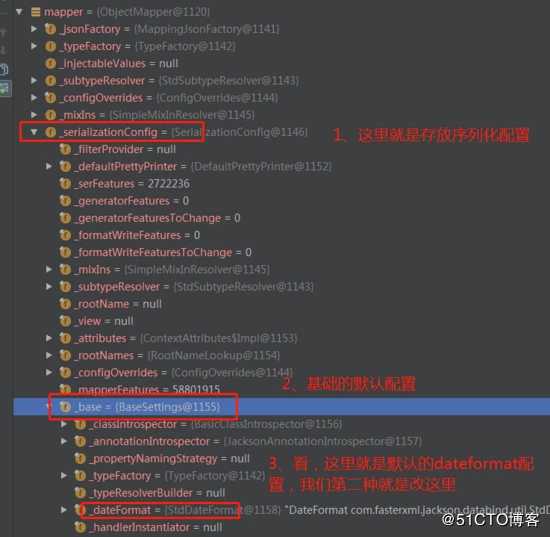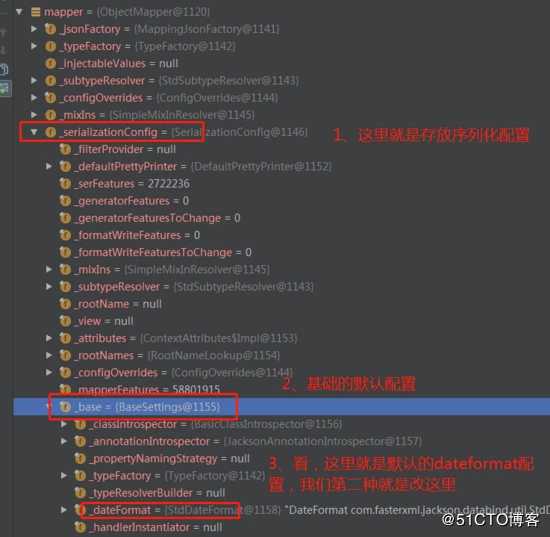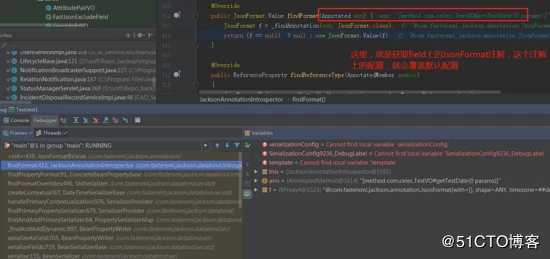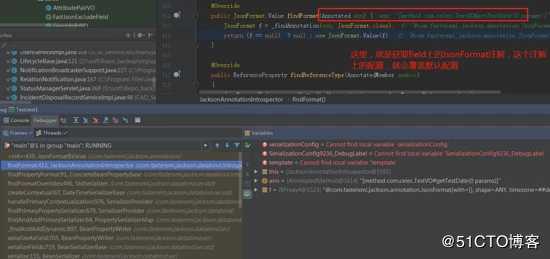标签:inf @param uid 问题 confirm gets 取消 connect object
前言前一阵开发过程遇到的问题,用的 rabbitmq template 发送消息,消息body里的时间是比当前时间少了8小时的,这种一看就是时区问题了。
就说说为什么出现吧。
之前的配置是这样的:
@Bean
public RabbitTemplate rabbitTemplate(ConnectionFactory connectionFactory) {
RabbitTemplate template = new RabbitTemplate(connectionFactory);
template.setMessageConverter(new Jackson2JsonMessageConverter());
template.setMandatory(true);
...
return template;
}要发送出去的消息vo是这样的:
@Data
public class TestVO {
@JsonFormat(pattern = "yyyy-MM-dd HH:mm:ss")
private Date testDate;
}然后,出现的问题就是,消息体里,时间比当前时间少了8个小时。
{"testDate":"2019-12-27 05:45:26"}原因
我们是这么使用rabbitmq template的:
@Autowired
private RabbitTemplate rabbitTemplate;
@Autowired
private RedisRepository redisRepository;
/**
* 发送消息
* @param exchange 交换机名称
* @param routingKey 路由键
* @param msgMbject 消息体,无需序列化,会自动序列化为json
*/
public void send(String exchange, String routingKey, final Object msgMbject) {
CorrelationData correlationData = new CorrelationData(GUID.generate());
CachedMqMessageForConfirm cachedMqMessageForConfirm = new CachedMqMessageForConfirm(exchange, routingKey, msgMbject);
redisRepository.saveCacheMessageForConfirms(correlationData,cachedMqMessageForConfirm);
//核心代码:这里,发送出去的msgObject其实就是一个vo或者dto,rabbitmqTemplate会自动帮我们转为json
rabbitTemplate.convertAndSend(exchange,routingKey,msgMbject,correlationData);
}注释里我解释了,rabbitmq会自动做转换,转换用的就是jackson。
跟进源码也能一探究竟:
org.springframework.amqp.rabbit.core.RabbitTemplate#convertAndSend
@Override
public void convertAndSend(String exchange, String routingKey, final Object object,
@Nullable CorrelationData correlationData) throws AmqpException {
// 这里调用了convertMessageIfNecessary(object)
send(exchange, routingKey, convertMessageIfNecessary(object), correlationData);
}
调用了convertMessageIfNessary:
protected Message convertMessageIfNecessary(final Object object) {
if (object instanceof Message) {
return (Message) object;
}
// 获取消息转换器
return getRequiredMessageConverter().toMessage(object, new MessageProperties());
}获取消息转换器的代码如下:
private MessageConverter getRequiredMessageConverter() throws IllegalStateException {
MessageConverter converter = getMessageConverter();
if (converter == null) {
throw new AmqpIllegalStateException(
"No ‘messageConverter‘ specified. Check configuration of RabbitTemplate.");
}
return converter;
}getMessageConverter就是获取rabbitmqTemplate 类中的一个field。
public MessageConverter getMessageConverter() {
return this.messageConverter;
}
我们只要看哪里对它进行赋值即可。
然后我想起来,就是在我们业务代码里赋值的:
@Bean
public RabbitTemplate rabbitTemplate(ConnectionFactory connectionFactory) {
RabbitTemplate template = new RabbitTemplate(connectionFactory);
// 下面这里赋值了。。。差点搞忘了
template.setMessageConverter(new Jackson2JsonMessageConverter());
template.setMandatory(true);
return template;
}反正呢,总体来说,就是rabbitmqTemplate 会使用我们自定义的messageConverter转换message后再发送。
时区问题,很好重现,源码在:
https://gitee.com/ckl111/all-simple-demo-in-work/tree/master/jackson-demo
@Data
public class TestVO {
@JsonFormat(pattern = "yyyy-MM-dd HH:mm:ss")
private Date testDate;
}测试代码:
@org.junit.Test
public void normal() throws JsonProcessingException {
ObjectMapper mapper = new ObjectMapper();
TestVO vo = new TestVO();
vo.setTestDate(new Date());
String value = mapper.writeValueAsString(vo);
System.out.println(value);
}输出:
{"testDate":"2019-12-27 05:45:26"}解决办法
指定默认时区配置
@org.junit.Test
public void specifyDefaultTimezone() throws JsonProcessingException {
ObjectMapper mapper = new ObjectMapper();
SerializationConfig oldSerializationConfig = mapper.getSerializationConfig();
/**
* 新的序列化配置,要配置时区
*/
String timeZone = "GMT+8";
SerializationConfig newSerializationConfig = oldSerializationConfig.with(TimeZone.getTimeZone(timeZone));
mapper.setConfig(newSerializationConfig);
TestVO vo = new TestVO();
vo.setTestDate(new Date());
String value = mapper.writeValueAsString(vo);
System.out.println(value);
}在field上加注解
@Data
public class TestVoWithTimeZone {
@JsonFormat(pattern = "yyyy-MM-dd HH:mm:ss", timezone = "GMT+8")
private Date testDate;
}
我们这里,新增了timezone,手动指定了时区配置。
测试代码:
@org.junit.Test
public void specifyTimezoneOnField() throws JsonProcessingException {
ObjectMapper mapper = new ObjectMapper();
TestVoWithTimeZone vo = new TestVoWithTimeZone();
vo.setTestDate(new Date());
String value = mapper.writeValueAsString(vo);
System.out.println(value);
}上面两种的输出都是正确的。
这里没有去分析源码,简单说一下,在序列化的时候,会有一个序列化配置;这个配置由两部分组成:默认配置+这个类自定义的配置。 自定义配置会覆盖默认配置。
我们的第二种方式,就是修改了默认配置;第三种方式,就是使用自定义配置覆盖默认配置。
jackson 还挺重要,尤其是 spring cloud 全家桶, feign 也用了这个, restTemplate 也用了,还有 Spring MVC 里的 httpmessageConverter 有兴趣的同学,去看下面这个地方就可以了。

如果对JsonFormat的处理感兴趣,可以看下面的地方:
com.fasterxml.jackson.annotation.JsonFormat.Value#Value(com.fasterxml.jackson.annotation.JsonFormat) (打个断点在这里,然后跑个test就到这里了)

总结
差点忘了,针对rabbitmq template的问题,最终我们的解决方案就是:
@Bean
public RabbitTemplate rabbitTemplate(ConnectionFactory connectionFactory) {
RabbitTemplate template = new RabbitTemplate(connectionFactory);
ObjectMapper mapper = new ObjectMapper();
SerializationConfig oldSerializationConfig = mapper.getSerializationConfig();
/**
* 新的序列化配置,要配置时区
*/
String timeZone = environment.getProperty(CadModuleConstants.SPRING_JACKSON_TIME_ZONE);
SerializationConfig newSerializationConfig = oldSerializationConfig.with(TimeZone.getTimeZone(timeZone));
mapper.setConfig(newSerializationConfig);
Jackson2JsonMessageConverter messageConverter = new Jackson2JsonMessageConverter(mapper);
template.setMessageConverter(messageConverter);
template.setMandatory(true);
...设置callback啥的
return template;
}rabbitmq template发送的消息中,Date类型字段比当前时间晚8小时
标签:inf @param uid 问题 confirm gets 取消 connect object
原文地址:https://blog.51cto.com/14528283/2462476